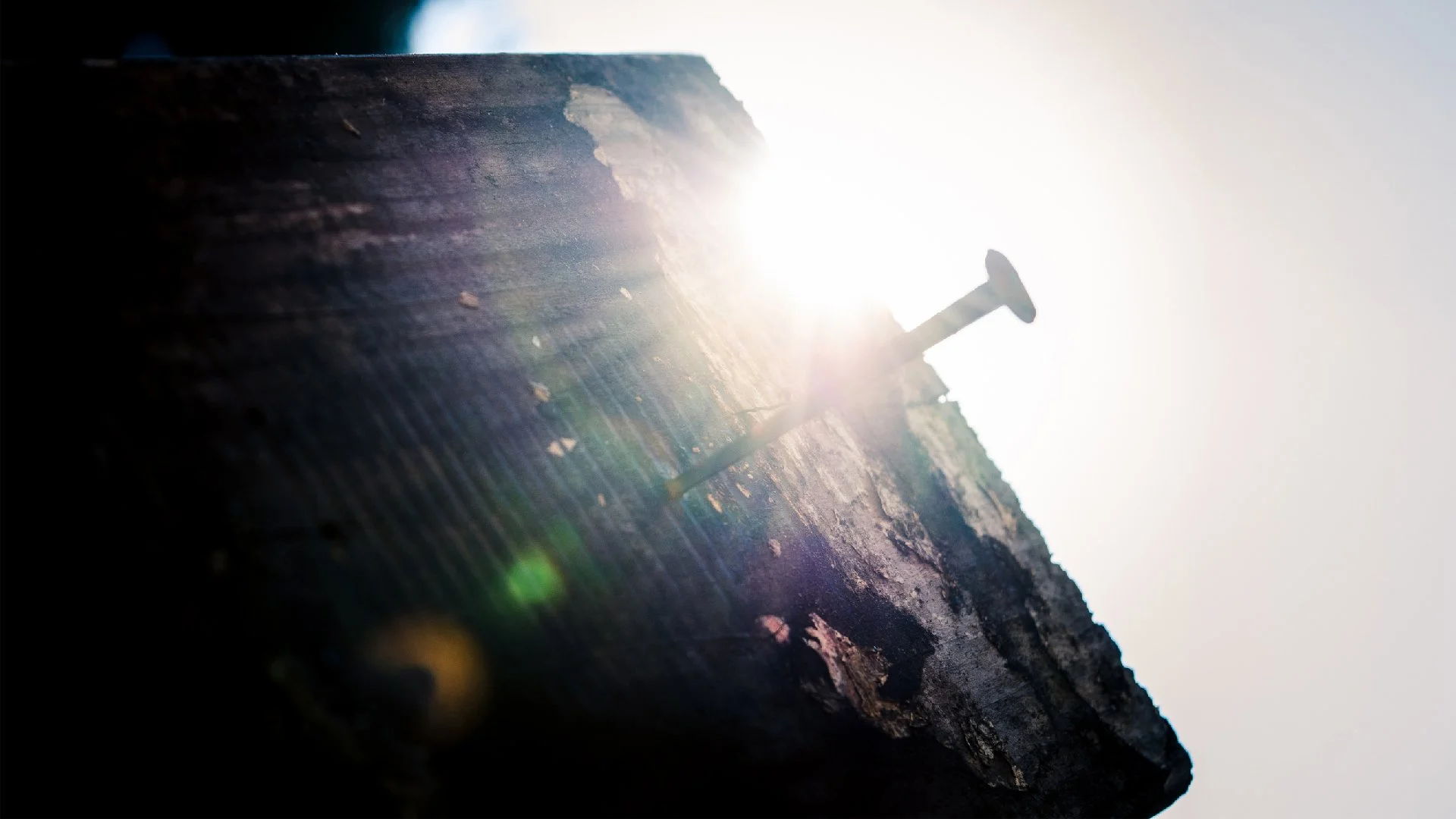The Tree that Became the Cross…
It began as a seed, falling out of a cone, carried by the wind. When the wind died down, the seed fell to the forest floor and touched the soil. A passing deer stepped on it, driving it deeper into the ground. In that seed a tiny root seeks out moisture. Another tendril begins to push up toward the warmth and the light, until it pushes through the crevices and finds sunlight. In the space of a few weeks, the unseen roots multiply, and leaves sprout. The miracle of photosynthesis begins to fuel a chemical factory that converts Co2 into oxygen, moisture into growth, and soil minerals into energy. A complex plumbing system of phloem and xylem transports everything where it needs to go, with no brain or nervous system to direct it.
The seedling becomes a small tree. It survives drought, fire, being trampled by animals, and birds bending its still pliable branches. In five years, it is as tall as an adult; in ten years, its trunk has thickened, and its limbs have strengthened. Woodpeckers visit and poke holes, looking for bugs. Rings are added each year as the tree lives and thrives.
After forty years, the tree has spread its limbs and seeds. It is the tall tree of the forest, towering majestically. Then comes the day when a group of men enters the forest. One yells, “This is a good one.” Crude axes swing. In less than half-an-hour, the mighty tree has fallen. It is limbed, with the branches placed into a small cart. They will become firewood. The tree is tied off to a team of oxen, who drag it out of the forest, into a clearing. Axes swing again. The thickest part of the tree is cut off, to be split into rough lumber. It will be sold to carpenters and used for furniture and doors and enclosures for windows. The next section is about twenty feet long. The bottom fifteen is cut, and then a notch is placed about two feet from the top. The fifteen-foot section and the five-foot section are placed on a cart with some other lumber, a delivery to Jerusalem.
The two pieces of the tree are sold to a Roman centurion after some intense haggling. The vertical piece, the heavy piece, will be dropped off at Skull Place, where crucifixions are held. The cross beam, about two hundred pounds, is delivered to Fortress Antonia. It will be shuttled back and forth from the Fortress to Skull Place on the backs of condemned men. There it is joined again with its brother, fitted into the notch chopped out in the forest, and lashed together. A condemned man is placed on it, with nails driven into his palms, and one nail is driven into his overlapping feet. Then the cross is lifted up by straining soldiers and dropped into the pre-dug hole. Wedges of wood are driven between the vertical pole and the hardened side of the hole to keep the cross from swaying.
No one keeps count of how many crucifixions these old pieces of a tree witness. Sometimes the victims stay on the crosses for hours, sometimes days. Death comes slow. Rome intends to send a message: “Cross us, and we will cross you.”
One day the cross beam is brought out from its storage place. The wood is no longer yellow; it is stained brown by all the blood it has absorbed through the years. There are multiple holes where nails have been driven. It is time for another crucifixion.
The cross beam, all two hundred pounds of it, is laid on a bloody back of a beaten man. Ironically, he was a carpenter before he became a rabbi. He once carried weight like this easily, but after a few hundred yards, he stumbles. A passer-by is compelled to carry the cross beam to Skull Place.
The familiar ritual begins again: the lashing of the cross beam to the vertical beam; the stretching out of the victim, the cries of pain as the nails pierce the skin and split the cartilage. Then the victim and wood, joined together, are dropped into the hole.
If wood could speak, it would say this crucifixion is like none before. There is darkness, an earthquake, words of forgiveness, and words of abandonment. More quickly than the norm, the man on the cross dies. The wedges are removed, the cross is lifted, and once more laid on the ground. The nails are driven out, and the body is rolled off, with fresh blood pooling on the wood. Knots are undone, and the cross beam is thrown onto a cart to be taken back to the Fortress to be used again.
The blood that is absorbed by the wood from this crucifixion is no ordinary blood. It is the blood of the perfect one, the blood of the Son of God, who has come to take away the sin of the world.
The dead wood, which used to be a living tree, is the first to make contact with the life-giving blood of Jesus. Have you?

